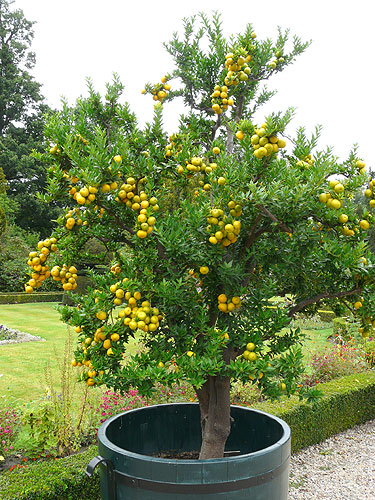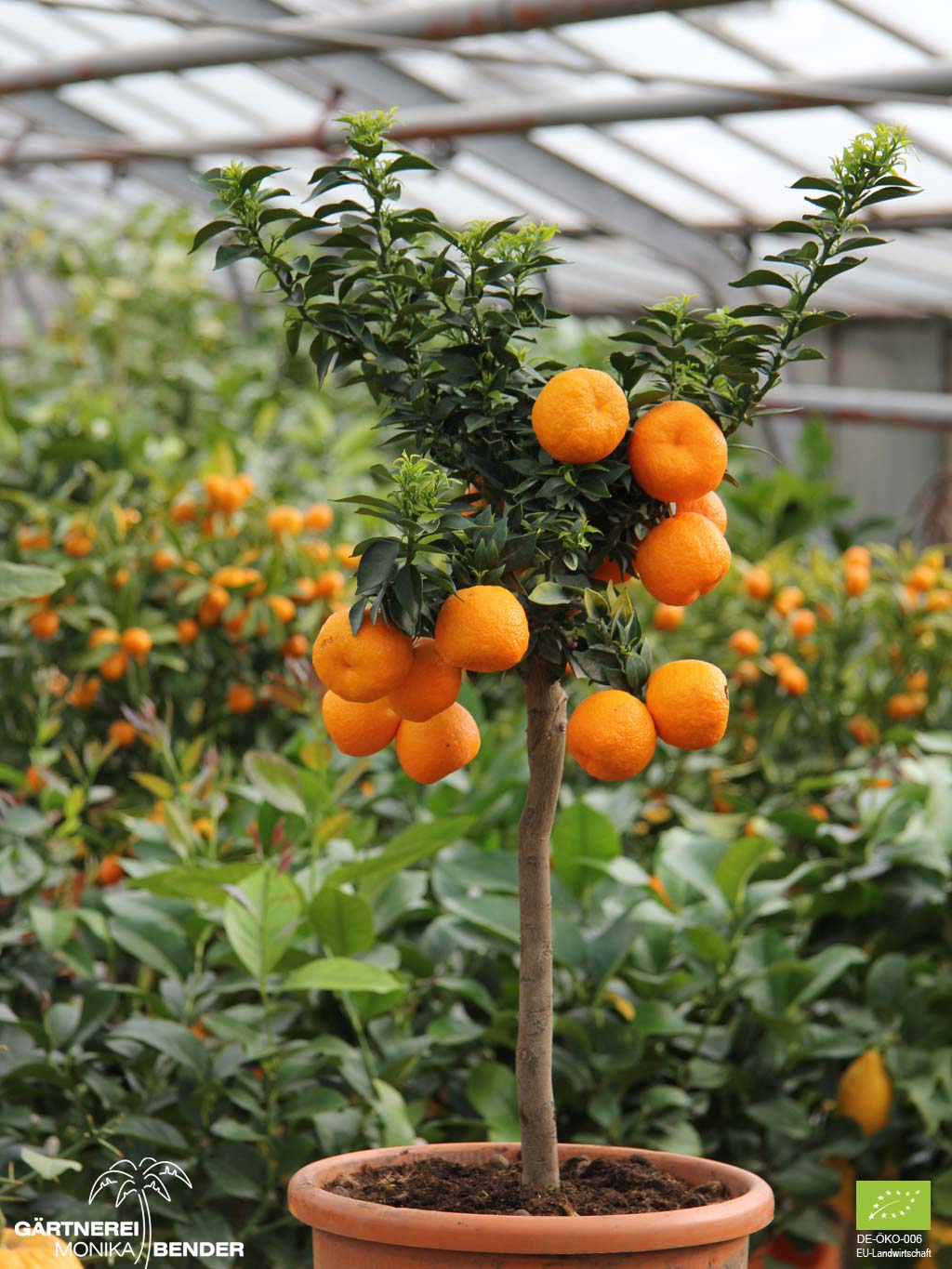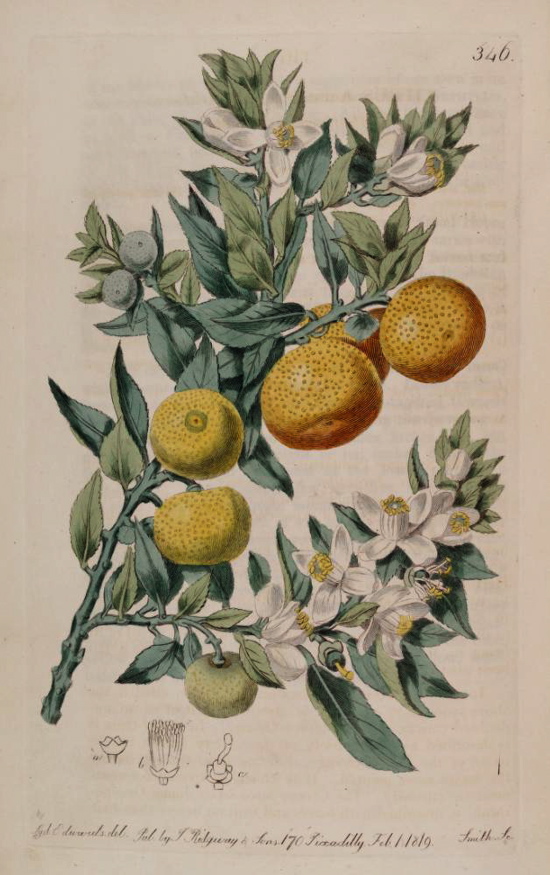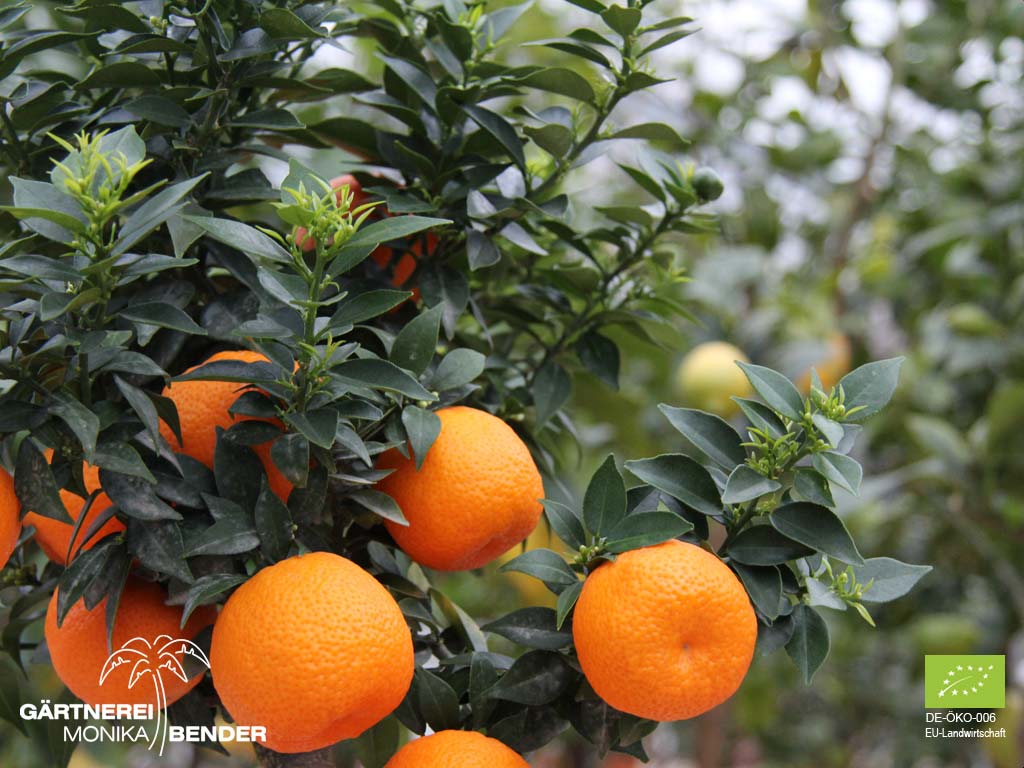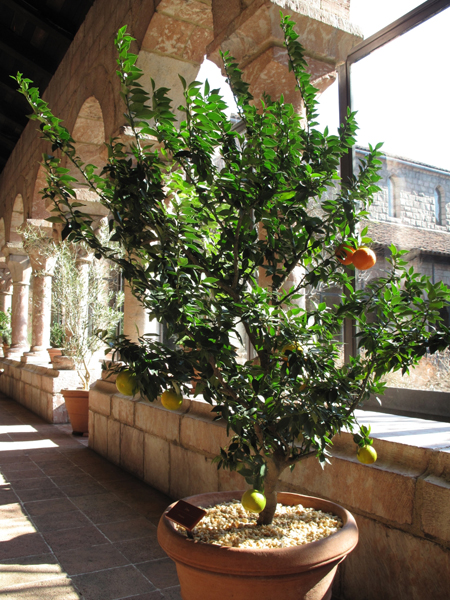Citrus myrtifolia
In the group of varieties chinotto are some varieties of bitter orange (Citrus aurantium ×, syn. Citrus aurantium var myrtifolia, Citrus myrtifolia ) summarized. The juice is added to many after-dinner drinks in Italy, and is also included in Campari. Under the name chinotto is also a quinine soft drink on the market, which is mainly made from the juice of the fruit. Characteristic features are the dark color and the bitter-sweet taste. A similar drink is common in Malta under the name Kinnie.
The chinotto varieties form small, slow-growing shrubs. The leaves sit at very short intervals of not reinforced branches. They are small, dark green and narrow with long tapered end. The orange fruits are smaller than other bitter orange. The number of seeds per fruit is very variable.
The origin is viewed as a mutation of the bitter orange, it should have come from China to the Mediterranean in the 17th century. The name ( chinotto Italian, French chinois ) refers to this origin.
Hodgson identifies four different varieties:
- ' Boxwood Leaf chinotto ' ( ' Chinois à feuilles de Buis ') - not pointed but rounded leaves, shrub less dwarf
- Wavy relatively large leaves - ' Crispifolia '
- 'Large chinotto ' - relatively large, pointed leaves, rich harvest
- 'Dwarf chinotto ' - very small shrubs, flowering, different supporting
Documents
The information in this article come from:
- Robert Willard Hodgson: Horticultural Varieties of Citrus. In: Walter Reuther, Herbert John Webber, Leon Dexter Batchelor (eds.): The Citrus Industry. 1967 ( http://lib.ucr.edu/agnic/webber/Vol1/Chapter4.html, accessed on 20 May 2008).
- Walter T. Swingle: The Botany of Citrus and Its Wild Relatives. In: Walter Reuther, Herbert John Webber, Leon Dexter Batchelor (eds.): The Citrus Industry. 1967 ( http://lib.ucr.edu/agnic/webber/Vol1/Chapter3.html, accessed on 20 May 2008).



